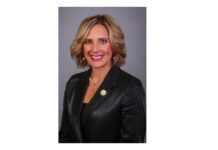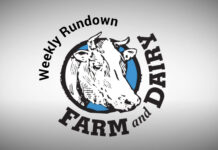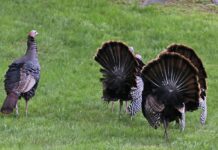
Wildlife officers have many jobs and one that I feel remains near the top of the list is the interaction that they have with conservation clubs. I’ve also heard a few rare complaints about the task, and a very few instances where an officer stopped by a meeting just long enough to give a club an update.
I understand that there are times that officers felt their time would be better spent on enforcement duties, but I’ve always felt the real reason for skipping a meeting or event was the pressure they felt to get as much done as possible during their working hours.
There’s no doubt that enforcement is an important part of the officer’s job, but it should never be the only portion given attention. There are also officers who realize this early in their career and excel in developing personal connections within local clubs. Those officers become a trusted and welcome ear, not some starched authority figure. These contacts become a recognized and valued commodity for the division.
Finding time
The working environment has changed significantly since I left state service 14 years ago, although that transformation was already in progress. Early in my career, wildlife officers were given a great flexibility when dealing with their workload. They regularly worked odd hours which could be any of the 24 that make up the day. Deciding upon that to-do list included weighing the importance of phone calls, tips, hunches and complaints which gave them a hint of when to be on the road.
Other factors included required meetings, training, wildlife and fishery surveys, special assignments and conservation club activities. Toss in program requests, hunter education classes and family functions and you soon realized that coming up with a solid schedule was harder than juggling porcupines and balloons.
Officers would split days in half or even thirds and flexed hours from one day to another, all to try to get the most bang for the buck. They kept a close eye on weather patterns and would shift hours around days they felt that they would be most effective in the field. Club meetings were attended at the end, beginning or mid-shift … or even on a day off. All of this flexibility had its positive and negative effects. Abuse of the system was rare but possible; there was an amount of stress on family life due to publicly listed home phones, and the feeling of not having time off pressed down upon officers. Many also volunteered a lot of time hoping to catch the “baddest of the bad” which, under scrutiny, was a violation of labor guidelines.
Eventually, new work rules driven by union contracts, interpretations of Fair Labor Standards and vastly improved communications and computer capabilities have corrected many problems — although they produced their own burdens. Time-saving computers created time-consuming tasks and the ability to track people and vehicles created a perfect world for imprudent micro-management.
Fortunately, both can be dealt with through training. Now, officers are better at covering vacant positions and vacations, and an amount of flexibility is still practiced and remains an important aspect of getting their jobs done. Those officers are also still looking at catching the “baddest of the bad” and improved investigative techniques continue to pay off.
Spending time
Let’s get back to when visiting conservation clubs has been important over the decades: in 1913 when Ohio introduced its first conservation club backed hunting license; in 1949 when the ODNR was formed and bobwhites returned to the game bird list; in 1973 as early wildlife diversity projects concerning bald eagles were instituted; during Issue 2’s anti-trapping campaign in 1976; when the mourning dove season was proposed in 1994; in 2005 when river otter trapping season was introduced; in 2018 when the structure and function of the Division of Wildlife was threatened; and during every year between and since.
The Division of Wildlife remains a service organization and its mission statement is clear: “To conserve and improve fish and wildlife resources and their habitats for sustainable use and appreciation by all.”
The division manages our wildlife resources for each of us with their primary funding falling in line with the North American Model of Wildlife Management. In other words, hunting and fishing licenses and permits make up the majority of the funding. This supports Ohio’s wildlife protection, research and habitat management of all the state’s critters.
The greatest cross-section of those footing that bill are represented at both large and small gatherings of clubs dedicated to conservation. They can be nationally based such as the Wild Turkey Federation, Pheasants Forever, Ducks Unlimited or the Audubon Society, or at any number of smaller clubs scattered throughout Ohio. When wildlife officers attend these functions, they add a mutual understanding, support and respect of issues and questions that everyone faces. These clubs and their members are the division’s stockholders and deserve the courtesy of attention and support which they will then, hopefully, reciprocate.
In 1888, the General Assembly dictated that a game warden be situated in each of Ohio’s 88 counties. Since that time, the organization went through several name and leadership changes, but the idea of providing professional representation in each county has not. Ohio’s Wildlife Officers remain the face of the Division of Wildlife and are one of the most accessible and trusted voices within the organization. Clubs want their local officer to stop in for more than just a moment or two — and I’m certain the division wants this tradition to continue, too.
While the county officer is still first in line to attend club functions, don’t be surprised to see almost any division employee show up for a little face time at these events … even the Chief. I’m always proud to see these men and women in green doing one of the jobs that they do best.
“In many ways, effective communication begins with mutual respect, communication that inspires, encourages others to do their best.”
— Zig Ziglar












